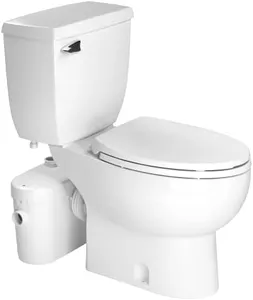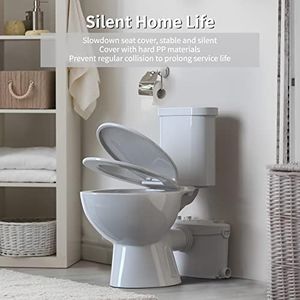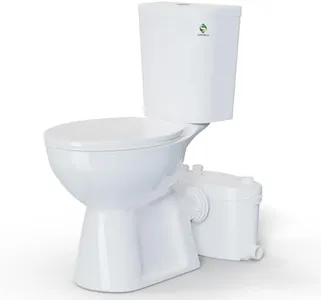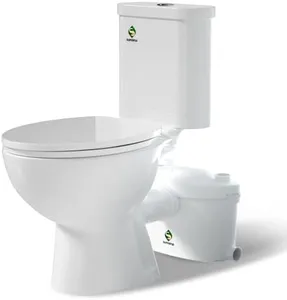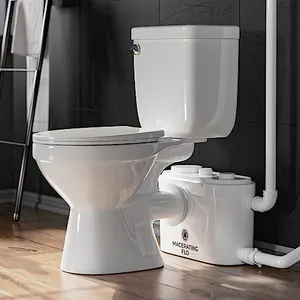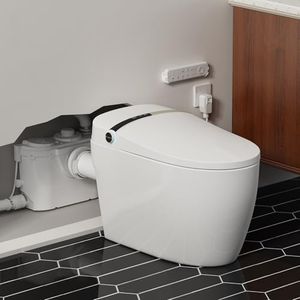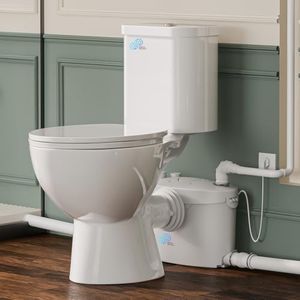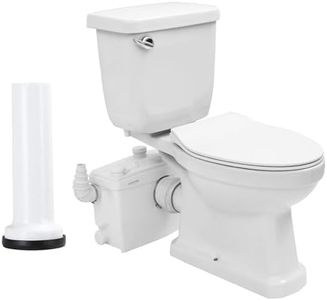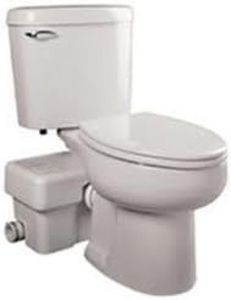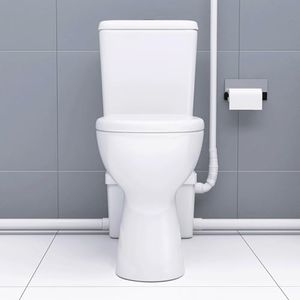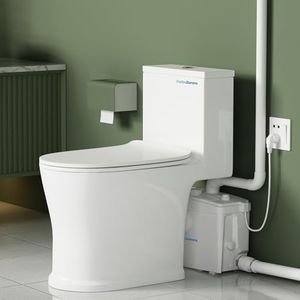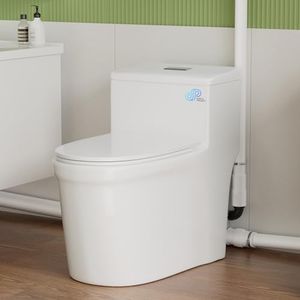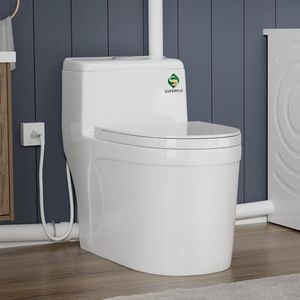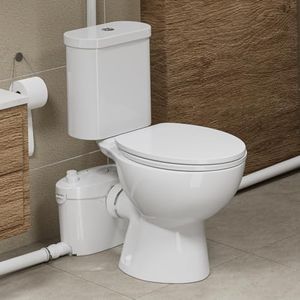10 Best Upflush Toilet Systems 2025 in the United States
Our technology thoroughly searches through the online shopping world, reviewing hundreds of sites. We then process and analyze this information, updating in real-time to bring you the latest top-rated products. This way, you always get the best and most current options available.

Our Top Picks
Winner
SANIFLO Saniaccess 2 + Toilet Bowl Elongated + Toilet Tank Bundle - Residential - White
The SANIFLO Saniaccess 2 is an upflush toilet system designed for residential use, making it a convenient choice for those looking to add a bathroom without extensive plumbing work. Its bundle includes the toilet bowl and tank, simplifying the purchasing process for customers. One of the standout features is its dual functionality, allowing it to discharge not only toilet waste but also gray water from a sink, which can be a great advantage for smaller spaces or renovations where traditional plumbing isn’t feasible.
In terms of performance, the 0.5 HP motor provides adequate power, achieving a discharge rate of 17 gallons per minute at a height of up to 30 feet. This makes it suitable for a variety of installation scenarios. The noise level is rated at 53 dBA, which is relatively quiet for a macerating pump, ensuring that it won't be too disruptive in your home.
Installation is straightforward, thanks to the included components and compatibility with existing plumbing. Maintenance is also user-friendly, with two easy-access panels for servicing the electrical components and the macerating blade. This feature can save time and effort if any issues arise, as users can quickly check or remove foreign objects without professional help. However, there are some drawbacks to consider. Weighing in at 111 pounds, the unit may be cumbersome to handle during installation, particularly for a DIY project. Additionally, while the warranty provides some peace of mind, customers should be aware that the coverage requires registration for the full four years. Lastly, being a plastic material, it may not be as durable as some users would prefer compared to traditional ceramic options.
For homeowners seeking to enhance their plumbing options without major renovations, the SANIFLO Saniaccess 2 presents a practical solution, effectively balancing performance and convenience while requiring careful handling and maintenance.
Customer Highlights
A summary of real customer reviews to highlight what shoppers are saying!SUPERFLO Upflush Toilet with 600W Upward RY Macerator WHITE Silent & 3 Sec Flushing Toilet Pump For Basement Max Pumping to V32.8 & H263 Feet
The SUPERFLO Upflush Toilet with a 600W macerator is a powerful and energy-efficient solution for adding a toilet in areas with low water pressure, like basements or older homes. It can pump waste up to 32.8 feet vertically and 263 feet horizontally, making it versatile for various plumbing configurations. The maceration process reduces waste to slurry quickly with a 3-second flushing cycle, minimizing power consumption and operational noise.
Installation is straightforward with flexibility in connecting additional sinks or showers, but it's recommended to have a licensed plumber for the job. The package includes necessary fittings and plugs, adding to ease of setup. The toilet is made of durable stainless steel and polypropylene, with a user-friendly design.
However, it may not be suitable for pumping liquids containing non-organic materials, which could void the warranty. This product is ideal for those looking to add functional bathroom facilities in challenging locations.
Customer Highlights
A summary of real customer reviews to highlight what shoppers are saying!SUPERFLO 19 Inch Macerating Toilet System | Upflush Toilet for Basement with Extra Tall Toilet Bowl & 600W Pump Toilets for Seniors, Tall Person & Disabled
The SUPERFLO 19 Inch Macerating Toilet System is an excellent choice for those looking to add a bathroom in a basement or unconventional space. Its comfort height of 19 inches is particularly beneficial for seniors and taller individuals, making it easier for them to sit and stand. The powerful 600W macerator pump ensures efficient waste removal, which is great for avoiding extensive plumbing work. Additionally, the dual flush feature is a smart way to save water, allowing you to choose between lower and higher flush volumes depending on your needs.
One of the standout features is the whisper-quiet operation. This allows for discreet use, whether day or night, so you won't disturb others in your home. Installation is also designed to be user-friendly, which is a huge plus for those not keen on complex plumbing challenges. You can easily place it in various locations like basements or attics, turning them into functional bathrooms without hassle. However, there are some drawbacks to consider. The system's noise level, although quieter than many alternatives, may still be noticeable in smaller spaces, especially when the pump activates. The 88-pound weight could be cumbersome for some users during installation, requiring at least one additional person for handling.
Customer Highlights
A summary of real customer reviews to highlight what shoppers are saying!Buying Guide for the Best Upflush Toilet Systems
Choosing the right upflush toilet system can be a bit overwhelming, but with the right information, you can make an informed decision that suits your needs. Upflush toilet systems are a great solution for adding a bathroom in areas where traditional plumbing might be difficult or expensive to install. These systems use a macerator to grind waste and pump it to the main sewer line, allowing for more flexibility in bathroom placement. Here are some key specifications to consider when selecting an upflush toilet system.FAQ
Most Popular Categories Right Now
